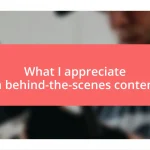Key takeaways:
- Streaming services have revolutionized media consumption, promoting on-demand viewing and binge-watching while diminishing shared viewing experiences.
- They have influenced content creation by encouraging diverse storytelling and giving creators more freedom to experiment, resulting in innovative narratives.
- Advertising strategies must adapt to targeted approaches and product integration within content due to the rise of ad-free subscription models.

Introduction to Streaming Services Effects
Streaming services have transformed the way we consume media, reshaping not only our viewing habits but also our emotional connections to content. I remember binge-watching a series late into the night, fully absorbed in the characters’ lives, feeling an unusual mix of joy and sadness as their stories unfolded. Have you ever found yourself so engrossed in a show that it felt more like a real-life drama than mere fiction?
These platforms have also altered social interactions; sharing favorite shows has become a staple in conversations. When I discuss the latest plot twist with friends, it’s not just about the entertainment—it’s a way to connect and bond over shared experiences. Isn’t it fascinating how a simple storyline can spark deeper discussions and even friendships?
Furthermore, the impact of streaming extends beyond entertainment; it has influenced our mental health, often linking late-night screen time with sleep patterns. I’ve had nights where I chose another episode over sleep, waking up groggy but oddly satisfied with the choices I made on screen. How often do we weigh our need for rest against our eagerness to escape into a fictional world? The effects of streaming services are complex and multifaceted, deserving careful examination.

Changing Media Consumption Habits
The proliferation of streaming services has shifted our media consumption habits significantly. I recall the days when my family would gather around the TV at a fixed time to watch our favorite shows. Now, I often find myself watching episodes whenever I want, for as long as I want, which grants me incredible flexibility. However, it sometimes leads to a solitary viewing experience, lacking that shared excitement of communal watching. Have you experienced this shift as well?
Additionally, the way we select content has also evolved dramatically. Instead of flipping through channels, I now scroll endlessly through a library of options, often struggling to choose what to watch. It’s like being a kid in a candy store but feeling overwhelmed by the abundance. I’ve even found myself spending more time deciding than actually watching, leading to an unfortunate phenomenon I like to call “decision fatigue.” Don’t you agree that too much choice can sometimes leave you feeling paralyzed?
And let’s not forget the rise of binge-watching culture, which is both a blessing and a curse. I remember when I first watched an entire season of a show in one weekend—I felt accomplished yet guilty at the same time. It’s amazing how a gripping narrative can keep you glued to your screen, but it often disrupts daily routines. Has binge-watching ever derailed your plans or routines? It certainly does for me!
| Old Media Consumption Habits | New Streaming Media Consumption Habits |
|---|---|
| Scheduled viewing (same time each week) | On-demand viewing (anytime, anywhere) |
| Limited choice (few channels) | Vast selection (endless options) |
| Shared family experiences | Individual, sometimes solitary viewing |
| Fixed duration (30 mins to 1 hour) | Binge-watching (multiple episodes) |

Impact on Traditional Television
The rise of streaming services has undeniably put traditional television into a challenging position. I think back to Saturday nights when my family always gathered to watch our favorite shows. Those moments were precious, filled with laughter and shared anticipation. Now, with the ability to stream almost anything, I often find myself watching alone, which can feel isolating. It’s as if the communal aspect of viewing has been traded for personal convenience, leaving a bittersweet taste in my mouth.
- Traditional TV once relied heavily on scheduled programming, but now flexibility prevails.
- Viewers are embracing on-demand content, often leading to a decline in live TV ratings.
- Original programming from streaming platforms has begun to draw talent away from traditional networks.
- The advertising model has shifted as companies adapt to cater to audiences who prefer ad-free experiences or shorter ads.
- Live events like sports still hold strong, reminding us that traditional TV has yet to fade away completely.
It’s fascinating to observe how these changes play out. I remember when my parents would prioritiae TV shows over everything, but now I see them browsing the internet for what to watch next, often questioning whether traditional channels are even worth their time. It amplifies the sense of loss; it’s not just about shows, but about the experiences we used to cherish together.

Influence on Content Creation
The influence of streaming services on content creation is quite profound. I often notice how these platforms encourage diverse storytelling. For instance, I was thrilled to discover a series showcasing lesser-known cultures and experiences that I might never have encountered on traditional TV. This variety not only broadens my horizons but also reflects a shift toward inclusivity in media.
Moreover, streaming platforms have empowered creators to take risks. I can remember watching a show that had a unique narrative structure, and I found myself fascinated by how unconventional storytelling could captivate an audience. It seems like creators now have more creative freedom, leading to innovative projects that may not have been greenlit by traditional networks. Don’t you find it exciting when a show breaks away from the norm?
Finally, the instant feedback loop created by streaming services heavily influences production decisions. Just think about how quickly audiences can react on social media! Last summer, I saw a series get renewed for a second season almost immediately after fans started a hashtag campaign to save it. It’s a powerful reminder that our preferences can shape the content we see, making us feel more connected to creators. Isn’t it amazing to know we have a say in what thrives on our screens?

Effects on Viewer Engagement
The shift to streaming services has transformed how we engage with content. I remember eagerly waiting for weekly episodic shows, chatting with friends about plot twists. Now, binge-watching changes the game—there’s so much content available that I often find myself flitting from show to show, sometimes losing the emotional connection I used to feel when savoring each episode. Have you noticed how the thrill of anticipation has turned into a more immediate, but often fleeting, experience?
Streaming also fosters a deeper and more personalized engagement. I’ve discovered that I often look for series that resonate personally, diving into storylines that explore themes of identity and struggle. I cherish the discussions that arise from these shows as they connect me to others who feel similarly, creating a community experience—even if it’s digital. Doesn’t it feel like we’re all curating our own unique viewing journeys?
Despite this intimate engagement, there’s a paradox of choice. Sometimes, I feel overwhelmed scrolling through endless options, indecision creeping in as I search for something that truly grabs my attention. It makes me wonder if, in our quest for variety, we might be overlooking the simple joy of committing to a single story. I’ve learned to embrace the occasional pause, reminding myself to enjoy the content rather than treat it like another item on my checklist.

Implications for Advertising Strategies
Advertising strategies must adapt significantly to the shift toward streaming services. From my experience, it’s evident that targeted ads can be more effective in this environment, especially since viewers are often in control of their content consumption. Think about the last time you saw an ad that seemed just right for you while streaming—a tailored experience really stands out, doesn’t it?
Moreover, brands should consider integrating their messages into the content itself, blending seamlessly into the viewing experience. I recall a show where a character used a specific brand of headphones in a pivotal scene; it felt organic and made me curious about the product. This type of subtlety can create a lasting impression without interrupting the viewer’s engagement.
Lastly, the rise of subscription-based models leads to interesting challenges in traditional advertising methods. With viewers paying for ad-free experiences, brands need to rethink how they navigate this landscape. I often wonder how companies will innovate to break through this barrier—will we see more exclusive partnerships or live events integrated with streaming platforms? It’s a fascinating time for advertisers, with both challenges and creative opportunities on the horizon.















